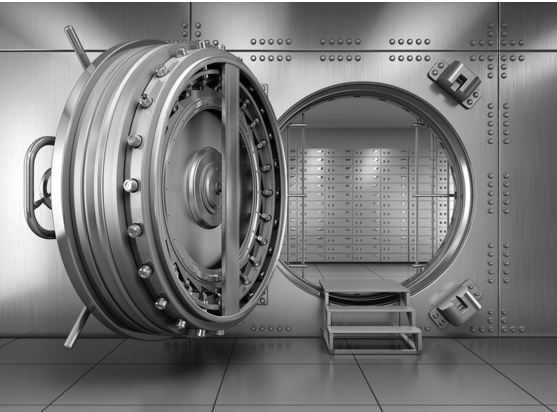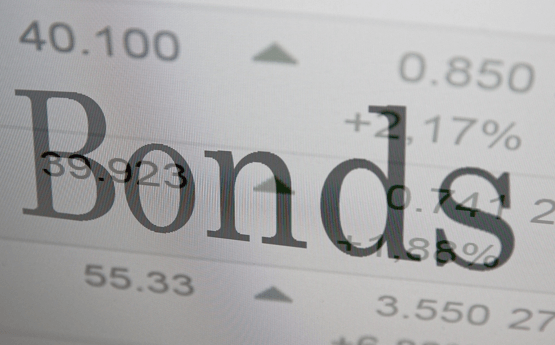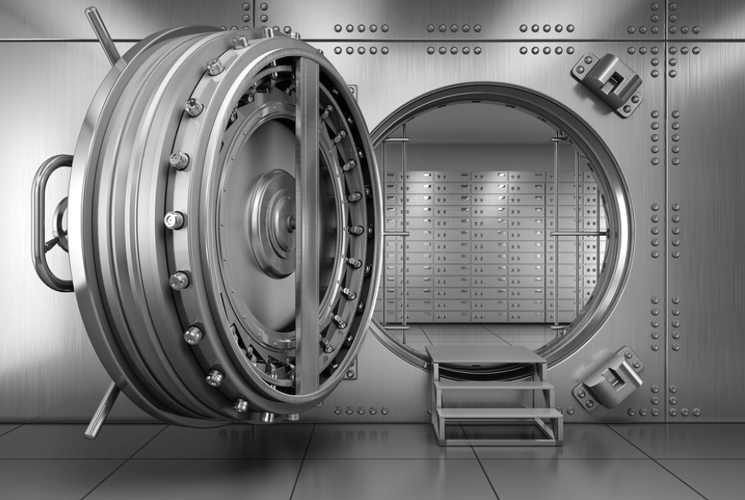9 Ways Negative Interest Rates Will Impact You
Throughout financial history, it has been the same. When you deposit money in a bank, the bank pays you for the privilege of holding your money.
The bank then takes that money and lends it out to other individuals and businesses at a higher rate. Essentially, this is how banks have turned a profit for centuries. The idea of negative interest rates has been an intellectual curiosity discussed from time to time in academic circles of macroeconomics.



Image Source: BigStock
Starting two years ago, these theories are no longer just a curiosity—negative rates are now a reality in the world of finance. In fact, it is the stated policy of some of the biggest central banks in the world.
The European Central Bank, the Bank of Japan, and the central banks of Sweden, Denmark, and Switzerland have all dropped their interest rates below zero since early 2014.
What Are Negative Rates?
Basically, negative interest rates mean that instead of paying out interest to a depositor, a bank charges a fee to that depositor for the privilege of storing their money in a bank. More often, this is meant to work at the central bank level, but it could also be applied to consumer banking.
How Do Negative Interest Rates Work? | Negative Interest Rates Explained
The idea behind central banks instituting negative interest rates is the same as any other interest rate cut that we might see. The goal is to encourage investment and consumer spending in order to jumpstart economic growth. The only difference is that we are now breaking what was previously considered to be the zero limit.
Negative rates are meant to punish banks that choose to stockpile cash instead of lending out that money to businesses or individuals.
All-in-One Change Management Tools
Top Rated Toolkit for Change Managers.
Get Your Change Management Tool Today...
Will This Negative Rate Trend Continue?
When the question of negative interest rates was put to Federal Reserve Chair Janet Yellen at a Congressional hearing in early 2016, she did not immediately dismiss the idea.
“We’re taking a look at them…I wouldn’t take those off the table,” Yellen said. While it is unlikely that the U.S. will be seeing negative yields in the immediate future, the mere fact that the idea was not dismissed out of hand illustrates just how mainstream the idea of negative rates has become.
If Negative Interest Rates Become the Norm, How Will This Affect You?
We will explore nine real-world scenarios that could play out if negative rates continue to rise in popularity among the world’s central bankers.
- Negative rates for the consumer
- Upheaval in retirement instruments
- Consumers will be encouraged to invest in real estate
- More manufacturing jobs
- Better cash flow for small businesses
- Instability and distrust in financial markets
- Pay to store paper money
- Currency wars
- Mortgages that pay you



Banks Will Pass Along Negative Rates to the Average Consumer
Perhaps the most obvious immediate consequence we might see with negative interest rates will be the passing along of that cost from the central bank to the consumer. If the bank has to pay to store its cash overnight in a central bank, then it might turn and squeeze the consumer for the same privilege. So, we might see savings accounts with, for instance, a negative 0.5% interest rate.
In practice, we have not yet seen this happen at the consumer level in any of the countries with negative interest rates. Typically, the bank will advertise a positive rate of return but then charge fees to consumers, causing the effective interest rate to be less than zero.
Economists predicted that negative interest rates on savings accounts would lead to consumers pulling their cash from the banks in droves. In reality, it seems as though consumers are willing to pay a small fee for the convenience and security of storing their cash in a bank account.
What is certain, however, is that banks are not passing 100% of their losses onto customers. Much of the profit is being squeezed from banks. While this might not greatly harm the largest banks in the world, it might be a problem for smaller community banks, which already struggle to turn a profit.
A negative interest rate policy would likely see the increased consolidation of the banking system, as many smaller banks simply couldn’t handle the further restriction of profit margins.
Upheaval in Retirement Instruments
One key factor in this discussion is the effect of negative interest rates on bonds.
Bonds are widely used to provide stable investment over the long-term for retirement accounts, balanced against what is thought to be the more volatile stock market. But when negative interest rates are introduced, bond markets are greatly affected.



Image Source: BigStock
In practice, we have seen bonds drop to negative rates. For instance, in mid-February 2016, a two-year Swiss government-issued bond had a rate of below negative 1 percent. And even 10-year bonds were offering an interest rate below zero. This is an indication that the markets consider it likely that negative rates will continue in Switzerland for many years.
Additionally, this has affected not only government bonds but also corporate bonds. While negative corporate bonds are still rare, debt bonds for large stable companies like Nestle have dropped below zero.
So what does this mean for your retirement? Well, it is unclear at this point, but there will undoubtedly be changes.
We might see investment firms putting more of their clients’ cash into stocks rather than bonds or even holding a larger percentage of retirement funds in cash, rather than securities.
At the heart of the issue, negative interest rates would most likely mean lower returns for retirement investors, at least in the short-term.









Consumers Will Be Encouraged to Invest in Real Estate
How will negative interest rates affect real estate? Well, there are a number of factors at work here.
Firstly, negative rates will encourage banks to drop the interest rates on the mortgages they extend, which will mean better interest rates for consumers.
Secondly, the first-time homebuyer will be motivated to buy early, rather than waiting until he or she has amassed a large down payment. In the past, it made sense to store cash in a savings account until one could afford a 20% down payment.
With negative interest rates, it is not so clear. If the prospective buyer waits five years for his or her savings account to fill up, a negative savings rate will have chipped away at that down payment.
So, we might see interesting new rates on home loans. This might also mean an even greater expansion of low or no-down payment mortgages, which in turn would affect the housing market.
The interest rates on these loans could be even more attractive than the conditions we saw under the housing bubble of 2007-2008. Hopefully, we could avoid the problems that followed the collapse of that bubble.
More Manufacturing Jobs
One of the desired effects of negative interest rates is the devaluation of the country’s currency. This devaluation, in turn, makes that country’s exports more attractive to foreign trade.
This could mean the creation of jobs within the country, as companies would theoretically need to expand their production and workforce in order to meet increased foreign demand.
One of the key topics in the 2016 US Presidential Election has been the issue of manufacturing jobs. America continues to lose jobs as companies move overseas in order to reduce labor costs.
A negative interest rate, and subsequent devaluation of the dollar to other currencies, could incentivize manufacturers to continue production in the U.S. rather than moving abroad.
Small Businesses Could Operate More Cleanly
An intriguing real world effect of negative interest rates would be the incentive to pay bills early. At both the business-to-business and the consumer level, consumers will be encouraged to pay off their bills if they have the capital rather than stash that cash in savings accounts with negative yields.
This would help to alleviate one of the classic problems facing businesses of all sizes: cash flow. Small businesses in particular have major problems getting companies and individuals to pay their invoices in time, causing problems with payroll.
This often leads to businesses operating with a smaller team than they would like or reducing investment in upgrades that would otherwise help increase sales and production.
In this way, negative interest rates could be a real boon to small businesses. Instead of having outstanding accounts payable, it would be easier to get people to pay their bills, which would allow these small businesses to reinvest those funds where they are most needed.
In a similar way, large companies would be encouraged to do the same. Companies like Apple, which has historically held massive stores of cash, would be encouraged to invest in its own ventures or in other companies, or else pay out this cash in dividends to shareholders.
Free Wealth & Finance Software - Get Yours Now ►
Instability and Distrust in the Markets
It is not all rainbows and fairy dust, though. One of the main objections to the large-scale introduction of negative interest rates is the idea that this would cause instability and distrust in markets across the board.
To many institutional investors, the idea of negative interest rates is still highly experimental and does not cause a great deal of optimism in the global economy.
Major asset manager Pimco has warned against the effects of negative interest rates in a February 2016 statement, saying that the “efficacy on growth or inflation is far from certain,” that “policymakers may have significantly underestimated the economic risks,” and that the policy appears to have “a chilling effect on financial markets.”
Assessments such as this have thrown cold water on the experimental idea of negative interest rates.
While touted as something of a “miracle cure” for what ails global markets, it is not at all clear what the long-term effects of negative interest rates might be, nor what might happen if a major entity like the Federal Reserve were to institute them.
Currency Manipulation
Negative interest rates could lead to currency manipulation and currency wars. Individuals and institutions are desperate to find a profit somewhere, so they might be motivated to gamble on foreign currency, hoping that the increase of that currency in relation to their home currency would make up for the negative interest rate.
With currency devaluation an explicit goal in the introduction of negative interest rates, this would almost certainly play out to some degree. Currency wars almost never end well for the world economy, as these processes tend to reduce overall international trade and restrict market growth.
Free Budgeting Software for AdvisoryHQ Readers - Get It Now!
Mini-Storage Vaults
Now that we have discussed the possibility of negative interest rates restricting global economic growth and causing uncertainty worldwide, let’s get back to discussing some of the more interesting theoretical ideas that have been tossed around.
While in practice we have not seen a run on the banks, with individuals removing their cash in droves, it does raise some fascinating ideas.
An enterprising individual might open a secure vault and charge consumers “rent” in order to house $100 bills in a secure vault. If a business like this could house the cash for less than the fees that banks would charge, it could make sense for high-level depositors.
Of course, it would make for some exciting new heist films, too.
Mortgages That Pay You
Picture this: you have a variable rate mortgage that is pegged to the central bank rate. For instance, when the central bank interest rate is 2.0%, you pay 3.5% interest. At a central bank rate of 3.0%, you would pay 4.5%.
Now imagine that the central bank rate is negative 2.0%. In some cases, it is possible that your rate could be negative 0.5%, effectively causing the bank to pay you for the right to loan you money to buy your house. Incredible, no?
While many do have minimum interest rates called “collars” in place, it seems that some mortgages do not have a lower bound for variable rate, known as “tracker” mortgages.
It would be very interesting to see how this plays out, as mortgage lenders would no doubt fight any such calls.
Free Money Management Software
Conclusion: Let’s Just See Where This Goes
As negative interest rates become increasingly popular across the globe, the actual effects of this experimental policy are not at all clear.
Over the next couple of years, we will wait to see how global markets, and the banking sector, are affected. While we have not yet seen massive changes at the consumer level, it will surely only be a matter of time before individuals are affected by these policies.
It will also be intriguing to watch how long central banks continue with the policy, in the event that markets do not react positively to these changes.
Will we see a doubling-down on the negative interest rate policy, with central banks cutting the rate further in order to stimulate growth? Or will we see a reversion to more traditional policies?
In the coming months and years, expect the world to hang on every word that comes out of the Federal Reserve, as this could be the major economic story of 2016 and beyond.
AdvisoryHQ (AHQ) Disclaimer:
Reasonable efforts have been made by AdvisoryHQ to present accurate information, however all info is presented without warranty. Review AdvisoryHQ’s Terms for details. Also review each firm’s site for the most updated data, rates and info.
Note: Firms and products, including the one(s) reviewed above, may be AdvisoryHQ's affiliates. Click to view AdvisoryHQ's advertiser disclosures.





